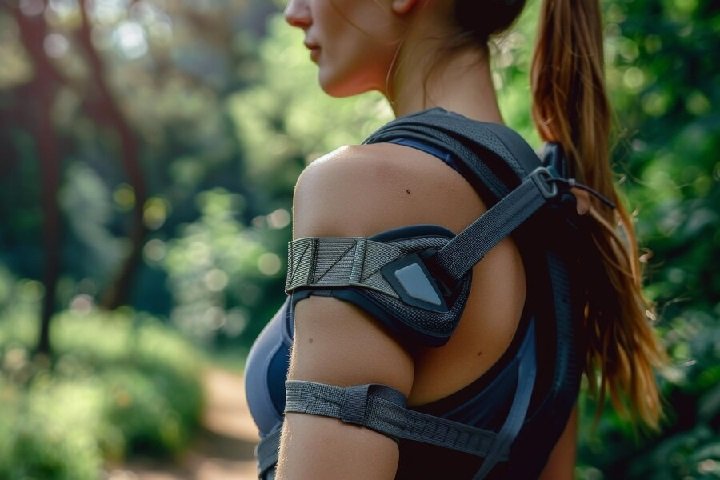Shoulder Straps: Types, Benefits, and Uses
Shoulder straps are essential accessories that blend functionality and style. Whether you’re carrying a bag, wearing a camera, or strapping on a piece of equipment, the right shoulder strap can make all the difference. In this guide, we’ll explore the various types of shoulder straps, their benefits, and how to choose the right one for your needs.
1. What is a Shoulder Strap?
A shoulder strap is a long, flexible strip of material, often padded, that attaches to a bag, camera, or other equipment, allowing it to be worn over the shoulder. Shoulder straps can be adjustable in length and come in various materials, including fabric, leather, and synthetic options.
2. Types of Shoulder Straps
Shoulder straps come in various styles and designs, each serving a unique purpose. Below, we explore the primary categories of shoulder straps.
2.1. Fashion Shoulder Straps
Fashion shoulder straps are primarily designed to enhance the aesthetic appeal of bags and purses. Here are a few examples:
- Leather Shoulder Straps: These straps add a touch of elegance and durability to handbags. They can be plain or embellished with studs, chains, or other decorative elements.
- Fabric Shoulder Straps: Made from materials like canvas or nylon, these straps are often colorful and patterned, providing a more casual look. They are popular for tote bags and crossbody bags.
- Designer Straps: High-end fashion brands often create unique shoulder straps that can be interchanged with their bags, allowing customers to customize their look.
2.2. Functional Shoulder Straps
These straps are designed with practicality in mind, often featuring ergonomic designs to enhance comfort during use. Examples include:
- Camera Straps: Designed for photographers, these straps provide stability and comfort while carrying cameras. They often feature padding and adjustable lengths for ease of use.
- Laptop Bag Straps: These straps are padded to support the weight of laptops and are often adjustable for a custom fit. Some even have additional features like quick-release clips for convenience.
- Gym Bag Straps: Made to withstand the rigors of the gym, these straps are typically made from durable materials and may include features like moisture-wicking properties.
2.3. Specialty Shoulder Straps
Certain shoulder straps are tailored for specific uses, including:
- Medical Shoulder Straps: These are designed for medical equipment like IV bags or portable oxygen tanks, featuring comfort and ease of use.
- Tool Straps: Often used in construction or trades, these straps secure tools and equipment, allowing hands-free transportation.
- Travel Straps: Designed for suitcases and backpacks, these straps provide additional support and often feature secure buckles to hold everything in place.
3. Benefits of Using Shoulder Strap
Shoulder strap offer several advantages that make them a must-have accessory:
3.1. Comfort
Padded shoulder strap can significantly reduce discomfort when carrying heavy items. They help distribute weight evenly across your shoulder, minimizing strain.
3.2. Versatility
Shoulder strap can be used with a wide range of items, from bags and backpacks to cameras and tools. Their adjustable nature allows for customization based on the user’s height and preference.
3.3. Style
Fashion shoulder strap can enhance the overall look of an outfit. A unique strap can transform a simple bag into a statement piece.
3.4. Security
Many shoulder straps come with additional security features, such as clips and buckles, to ensure that items remain securely fastened during transport.
4. How to Choose the Right Shoulder Strap
Selecting the right shoulder strap depends on several factors:
4.1. Purpose
Determine the primary use of the shoulder strap. Are you looking for something for fashion, photography, or functional purposes? Knowing this will guide your choice.
4.2. Material
Consider the material of the strap. Leather offers durability and style, while fabric options may be lighter and more comfortable for long-term wear.
4.3. Width and Padding
Wider straps with padding can provide more comfort, especially for heavier items. If you’re carrying a camera or a heavy bag, look for straps with adequate padding.
4.4. Length and Adjustability
Ensure that the strap is adjustable to fit your body size and preferred carrying position. A good strap should allow you to wear it comfortably across your body or over your shoulder.
5. Care and Maintenance of Shoulder Strap
Proper care can extend the lifespan of your shoulder straps. Here are some tips:
5.1. Regular Cleaning
Clean fabric straps with mild soap and water, and wipe leather straps with a damp cloth. Avoid harsh chemicals that can damage the material.
5.2. Store Properly
When not in use, store your shoulder strap in a cool, dry place away from direct sunlight to prevent fading or deterioration.
5.3. Inspect for Wear
Regularly check for signs of wear or damage, especially on adjustable parts and connectors. Replace straps that show signs of significant wear to ensure safety and functionality.
6. Conclusion
Shoulder straps are essential accessories that offer both style and practicality. By understanding the different types, benefits, and care tips for shoulder strap, you can make informed choices that suit your needs. Whether for fashion or function, the right shoulder strap can enhance your daily activities and ensure comfort and convenience.
Read More: Phone Repair
